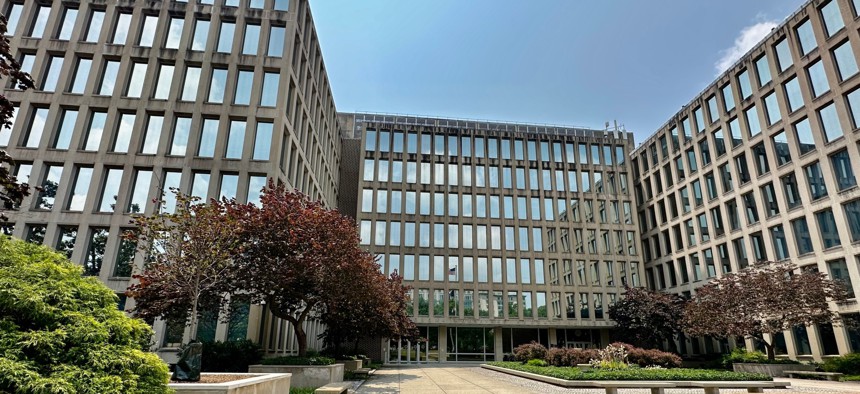
OPM’s new Workforce of the Future Playbook aims to provide agencies with examples and actionable steps to apply new workforce strategies. Douglas Rissing / Getty Images
OPM unveils its ‘future of work playbook’ for agencies to revamp HR processes
The federal government’s dedicated HR agency’s latest piece of guidance offers a list of concrete ways that human capital leaders can implement the Biden administration’s workforce agenda.
The Office of Personnel Management on Thursday unveiled a new human capital “playbook” aimed at providing concrete ways that federal agencies can implement its aggressive agenda to revitalize HR practices and better recruit and retain an elite workforce.
The goal of OPM’s new Workforce of the Future Playbook is to connect elements of the Biden administration’s workforce policies, such as strategic human capital planning or skills-based hiring, to concrete implementation strategies. In a memo to agency chief human capital officers accompanying the document, OPM Director Kiran Ahuja said the strategies comprise a mix of new ideas and existing yet underused policy tools.
“OPM has enunciated the specific actions or plays agencies can take, organized based on the three pillars of the [future workforce] vision,” she wrote. “Some of the plays are new and some rely on existing authorities and practices that have not been fully utilized but, if implemented, will serve as the foundation for a future that sees improved effectiveness and efficiencies in the federal government.”
The playbook outlines changes ranging from the immediate term—like skills-based and pooled hiring—to efforts to make HR offices more forward-looking and strategic, such as engaging in workforce planning initiatives, integrating AI technology where appropriate and improving agencies’ organizational health.
For each “play,” OPM offers short explanations of both the status quo and a so-called future state following the strategy’s implementation. It then lists a to-do list for agencies, a series of concrete examples of successful steps other federal agencies have already taken, as well as a series of links to other OPM resources on the topic.
On the topic of strategic recruitment, OPM argued that agencies need to work more proactively to court job applicants into federal service, noting that simply posting job announcements with technical titles on USAJOBS alone is too passive of an approach. The document cites efforts by NASA and the Veterans Affairs Department to highlight opportunities outside of USAJOBS.gov, such as maintaining a presence on LinkedIn and creating online recruitment videos to accompany job postings.
“Agencies [will] use ongoing, proactive and strategic recruitment tactics to increase interest in their positions so that applicants with the right skills are ready to apply when the announcement opens,” OPM wrote to describe its envisioned “future state” of recruitment. “Plain language and descriptive job titles [will be] used to improve applicants’ ability to find jobs that meet their skillset, resulting in more qualified applicants and a reduced number of unqualified candidates.”
Ahuja wrote that OPM hopes that the playbook remains a fixture among HR leaders in years to come.
“In the future, OPM will update the playbook with new plays and strategies as they are developed on an ongoing basis,” she wrote. “Leaders and hiring managers can use appropriate plays to embrace change and thereby ensure that their organizations are ready, willing and able to leverage the opportunities change provides.”







